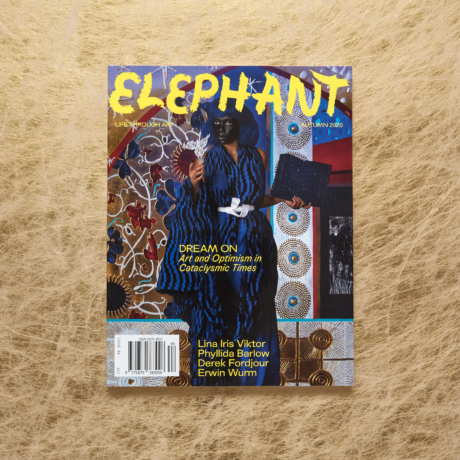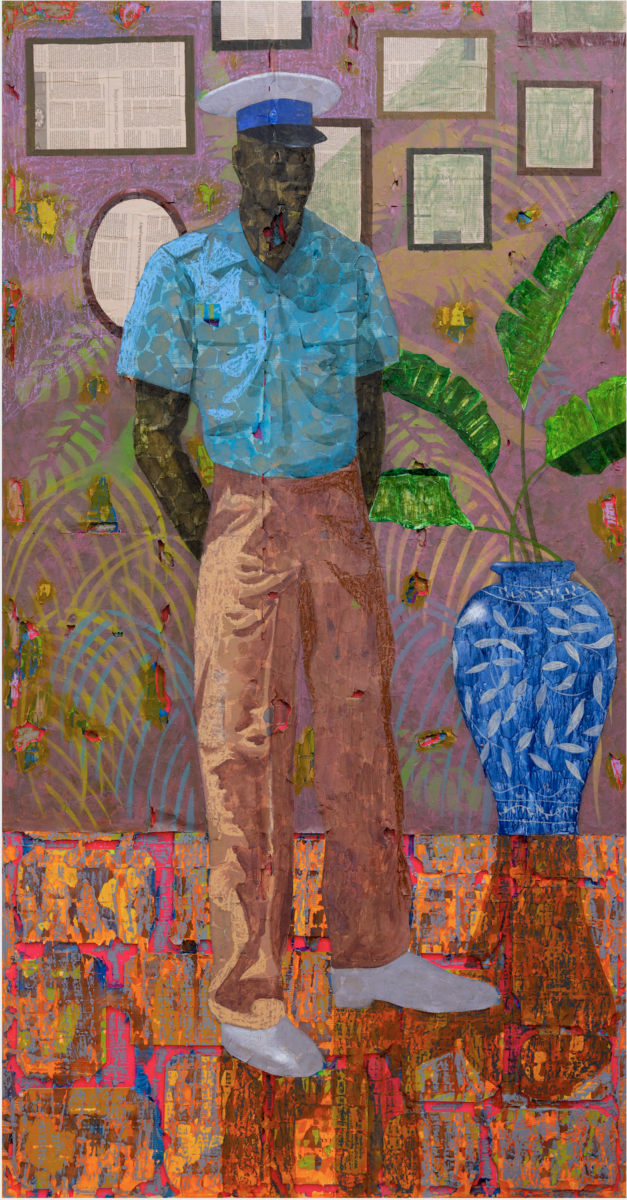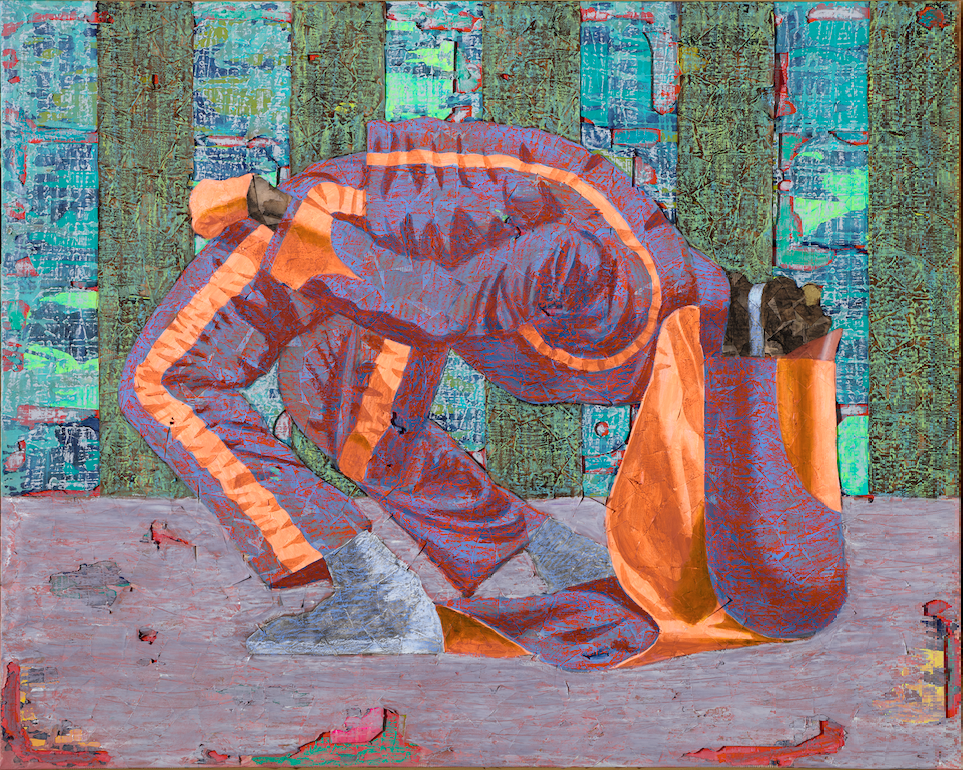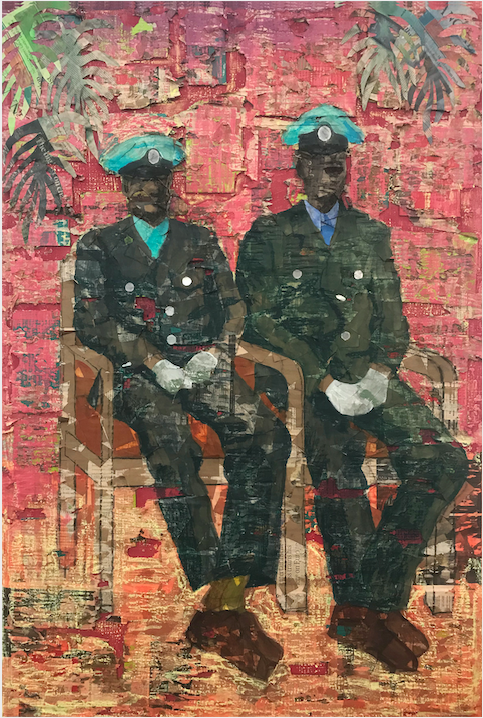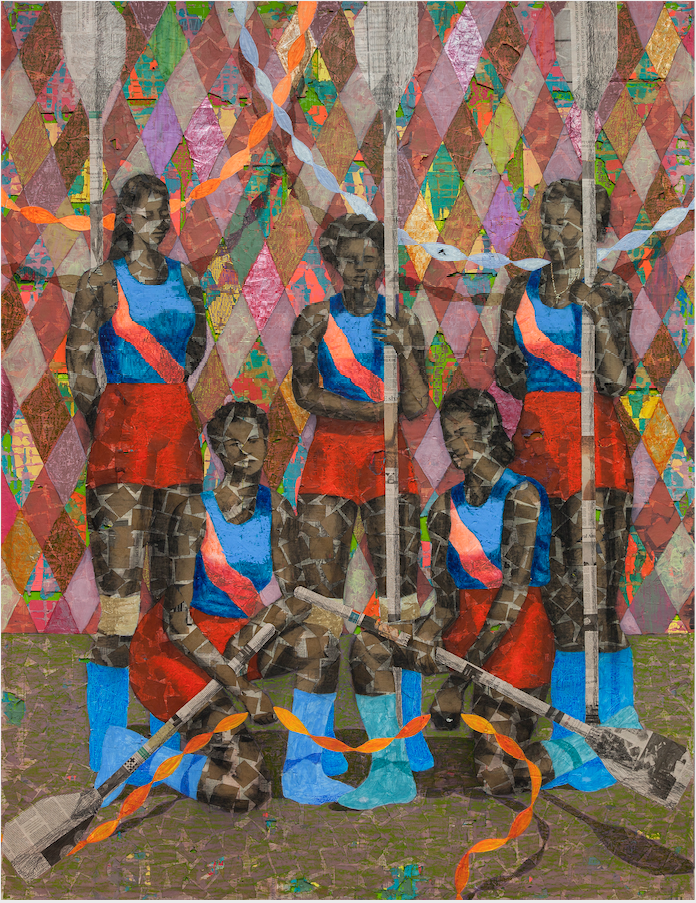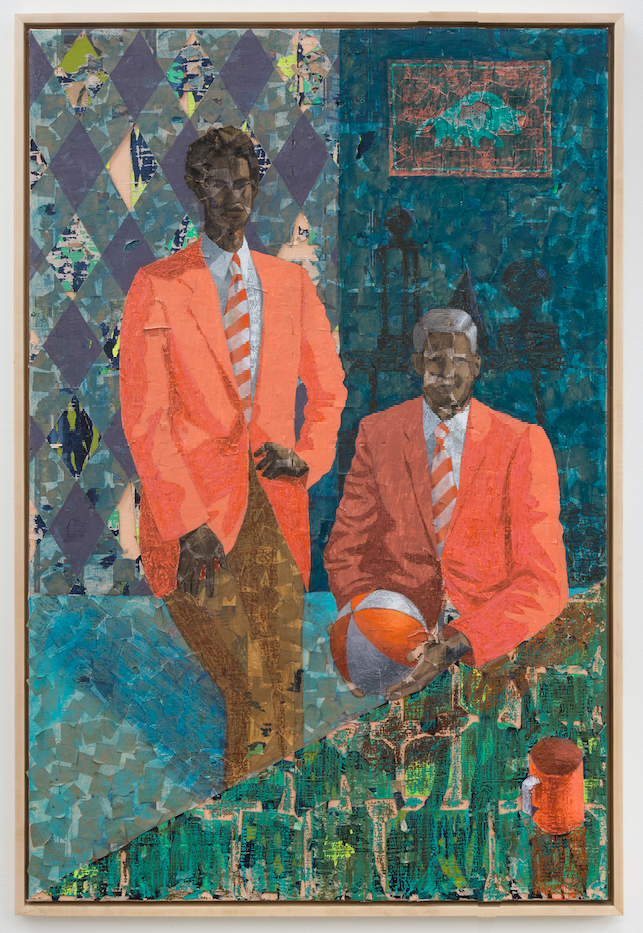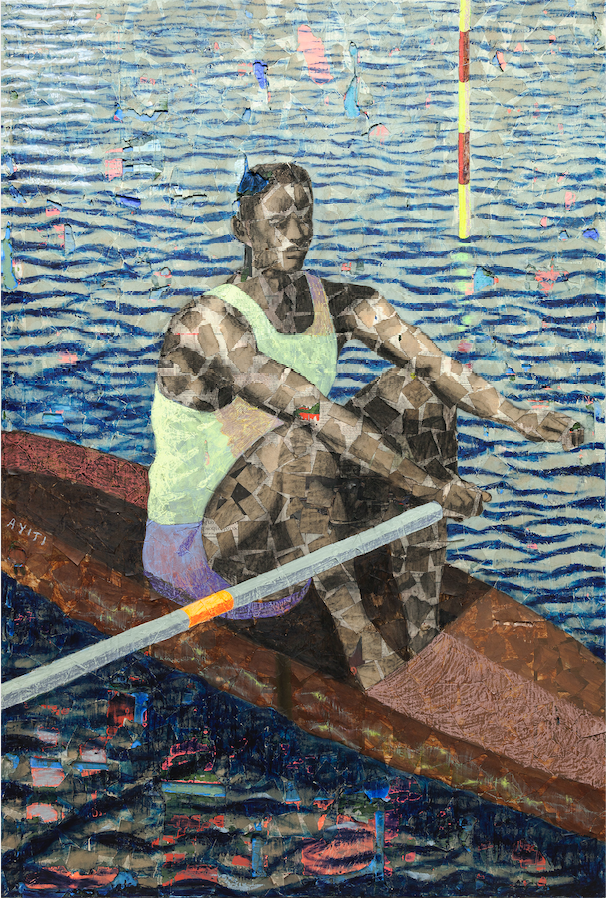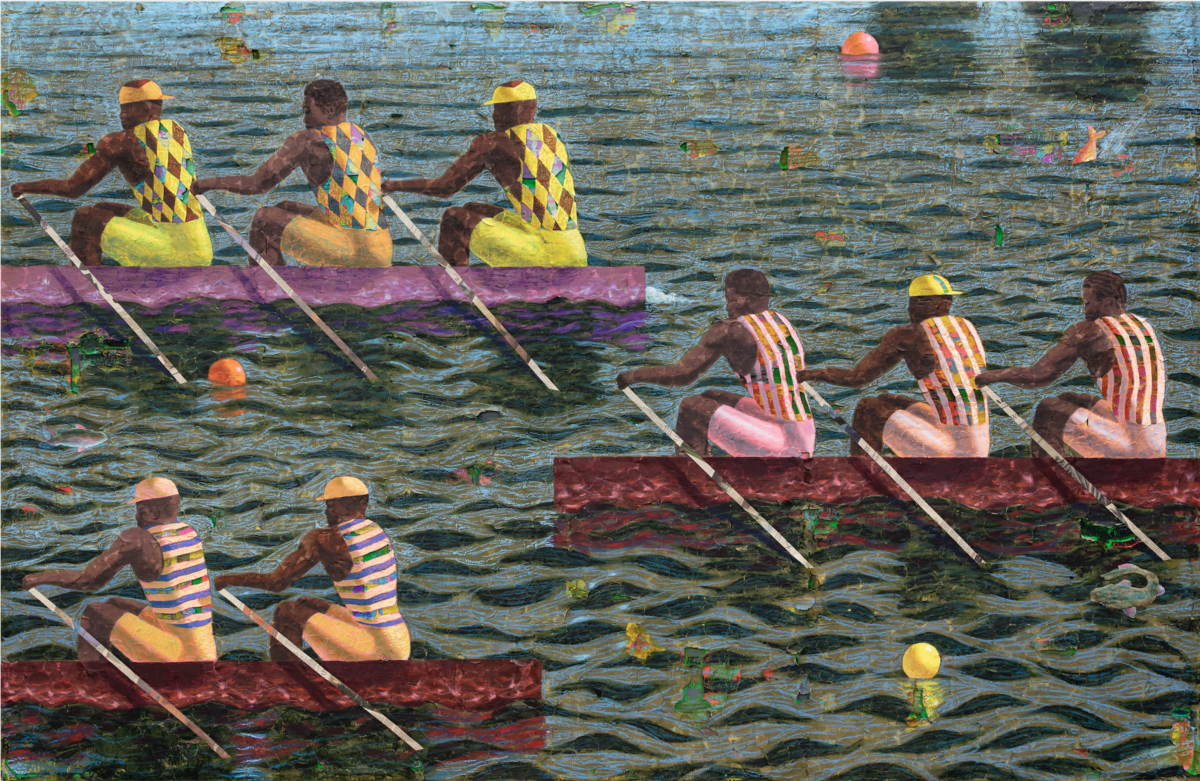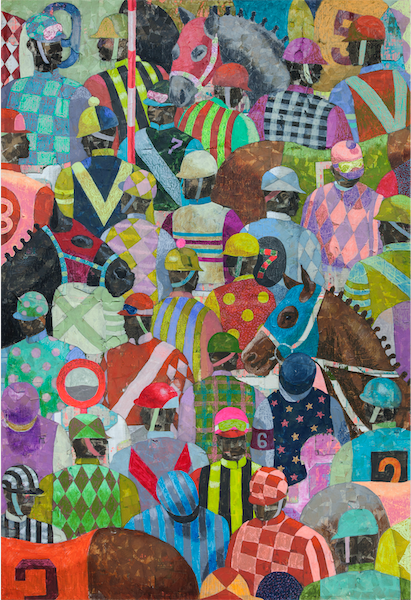
Derek Fordjour’s works are full of energy and movement, often featuring sports players and figures in motion, beating drums, folding nimbly into backbends, and posing in symmetrical tableaux with teammates. “Surely there are parallels between art and sport in society,” says the American artist. “They both have significant social, cultural and economic value, but no utility. They are also fundamental elements of organised societies around the world throughout history. Beyond these facts, my relationship to sport and gaming is somewhat allegorical, and my interests converge around the necessary appearance of fairness, rule setting, governance and competition.”
“I have a conceptual interest in patterns: how they persist, how they are disrupted, what is fixed and what is shifting”
The multiple figures in Fordjour’s wall-based works are often similar, decked out in matching costumes, and presented with almost identical frames and poses. There is something about this repetition which is pleasing on the eye, but it also calls to mind the regimented nature of group dynamics, and the play between the mass and the individual. “I have a conceptual interest in patterns: how they persist, how they are disrupted, what is fixed and what is shifting,” says the artist. “Formally this interest is best explained in the five general categories of Gestalt theory: proximity, similarity, continuity, closure and connectedness.”
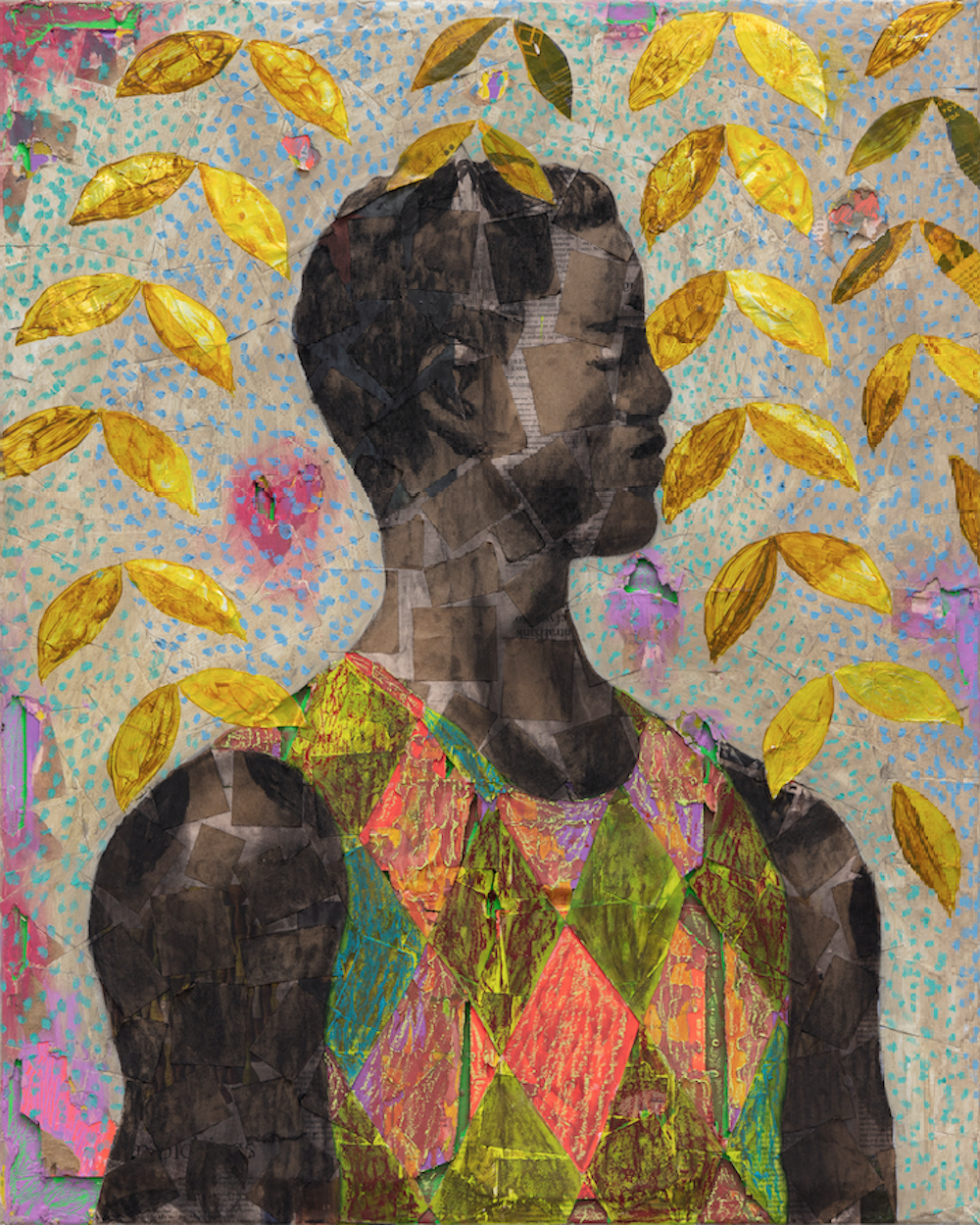
Fordjour often uses low-cost materials. He has previously associated his “worn” finishes with the cycle of clothing passed through his own family in the US, and eventually to Ghana, where his parents emigrated from. “I purposely work with newspaper, cardboard scraps and low cost, supermarket grade aluminium foil along with other pedestrian materials,” he says. “What began as a matter of necessity ultimately became a conspicuous act of association, connecting under-resourced communities with the privileged space of museums and galleries, which are inextricably linked to wealth.”
You can see more of Fordjour’s work in the new autumn issue of Elephant magazine. Derek Fordjour’s exhibition Self Must Die opens at Petzel on November 12, 2020.
